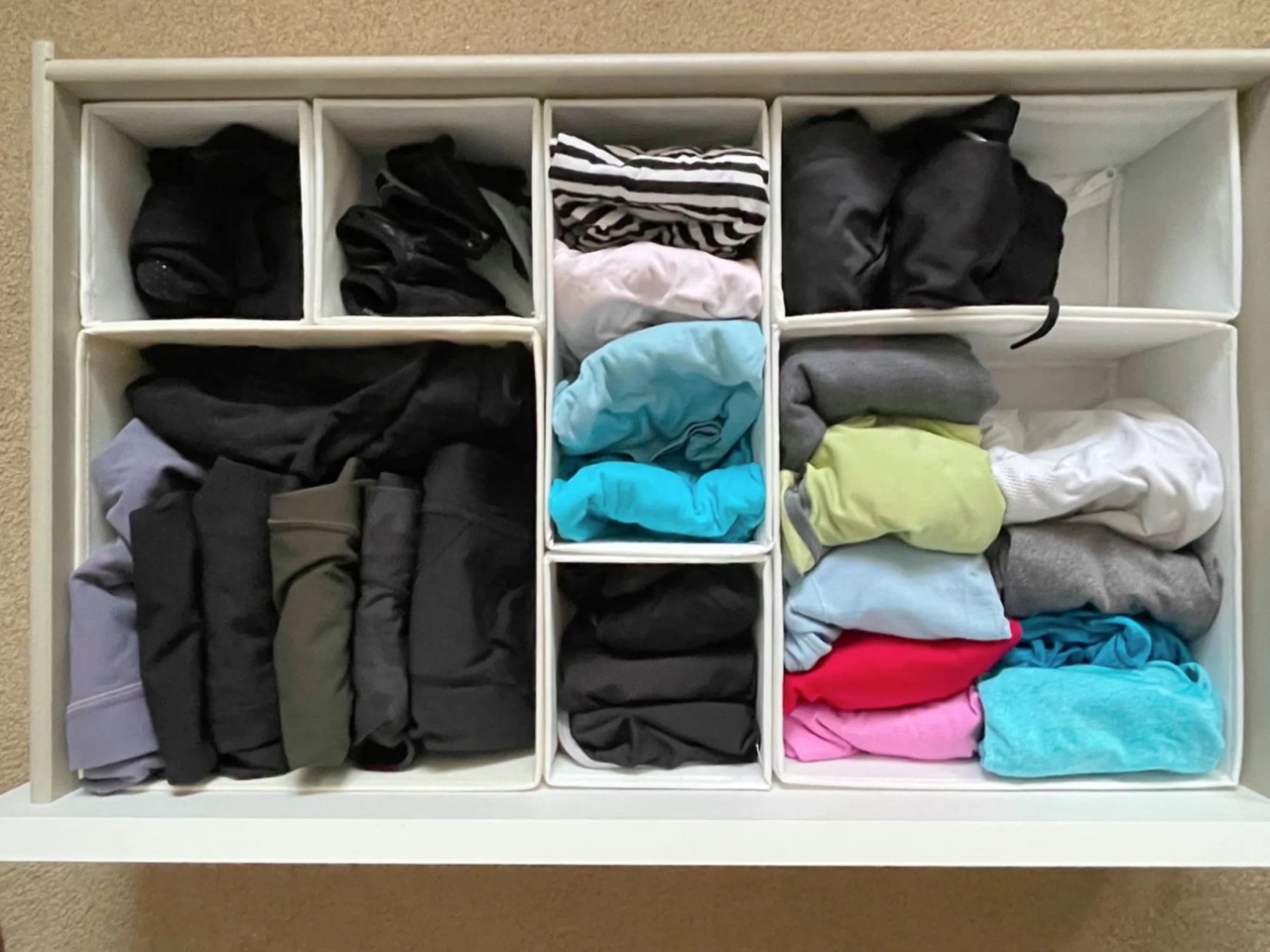

Articles
How To Store Gym Clothes
Modified: January 18, 2024
Learn effective ways to store your gym clothes and keep them fresh and odor-free. Read our articles for expert tips and tricks.
(Many of the links in this article redirect to a specific reviewed product. Your purchase of these products through affiliate links helps to generate commission for Storables.com, at no extra cost. Learn more)
Introduction:
When it comes to hitting the gym or engaging in any physical activity, having the right gym clothes is essential. However, many people overlook the importance of properly storing their gym clothes. Whether it’s a sweaty t-shirt, a pair of leggings, or a sports bra, how you store your workout gear can make a big difference in its longevity and freshness.
In this article, we will explore the reasons why properly storing gym clothes matters and provide you with practical tips on how to best store and care for your workout attire. From sorting and separating to cleaning and drying, choosing the right storage container, and preventing odors, we’ve got you covered with everything you need to know to keep your gym clothes in top-notch condition.
So, let’s dive in and discover the secrets to storing gym clothes in a way that keeps them fresh, clean, and ready for your next workout session.
Key Takeaways:
- Properly storing gym clothes is crucial for maintaining their quality, freshness, and longevity. Sorting, cleaning, and choosing the right storage containers are key to preserving your workout attire and saving time and money on replacements.
- Implementing proper hanging, folding, and storage techniques for gym clothes maximizes space and maintains their condition. Preventing odors and using natural remedies ensure fresh, clean workout attire for every gym session.
Read more: How To Store Sweaty Gym Clothes
Why Properly Storing Gym Clothes Matters:
Properly storing gym clothes is not just about keeping them organized; it plays a crucial role in maintaining their quality and freshness. Here are several reasons why it’s important to give your workout attire the proper storage it deserves:
- Preserve the fabric: Gym clothes are often made of technical fabrics that wick away sweat and provide breathability. However, these fabrics can become damaged if not stored correctly. Improper storage can cause stretching, pilling, and loss of elasticity, leading to a shorter lifespan for your favorite workout gear.
- Avoid odors and bacteria: After an intense workout, your gym clothes may carry unpleasant odors and bacteria. Storing them improperly can exacerbate these issues by trapping moisture and causing the growth of fungi or mildew. Proper storage methods help prevent odors and keep your clothes fresh and ready for your next workout.
- Save time and money: By properly storing your gym clothes, you can extend their lifespan. This means you won’t have to replace them as frequently, saving you money in the long run. Additionally, maintaining the quality of your workout attire eliminates the need for extra laundry cycles or expensive treatments to eliminate stubborn odors or stains.
- Stay organized: Keeping your gym clothes properly stored ensures that you always know where to find them. This saves you precious time and avoids frustrating searches for your favorite sports bra or leggings. Having an organized storage system also promotes a clutter-free space, making it easier to focus on your fitness goals.
- Maintain motivation: There’s something energizing about putting on fresh, clean gym clothes. Properly storing your workout attire helps maintain that motivation by ensuring that your clothes are always ready to wear. When your gym clothes are well-kept, you’ll feel more motivated to hit the gym and stay committed to your fitness routine.
By understanding the importance of proper gym clothes storage, you can take the necessary steps to preserve their quality, avoid unpleasant odors, and save both time and money. Let’s explore the best practices for sorting, cleaning, and storing your workout attire in the next sections.
Sorting and Separating Gym Clothes:
Before diving into proper storage techniques, it’s essential to start by sorting and separating your gym clothes. This step will help you stay organized and easily locate the specific items you need for each workout. Here are a few tips for sorting and separating your workout attire:
- Separate by activity: Group your gym clothes based on the type of activity you use them for. For example, separate your running gear from your yoga attire. This will make it easier to find the appropriate clothes for each workout.
- Sort by season: Depending on where you live, you may have different gym clothes for different seasons. Keep your warm-weather gear separate from your cold-weather attire to ensure that you have easy access to the appropriate clothing throughout the year.
- Organize by frequency of use: If you have certain gym clothes that you wear more frequently, keep them in a separate section for easy access. This way, you won’t have to dig through less frequently worn items to find your go-to workout gear.
- Create separate sections: Utilize dividers, bins, or collapsible organizers to create separate sections within your storage space. This will help keep your gym clothes neatly organized and prevent them from becoming tangled or wrinkled.
- Consider color-coding: If you’re someone who enjoys color-coordinating your wardrobe, take it a step further and color-code your gym clothes. Assign specific colors for different types of workouts or activities. For example, you could use blue for yoga, green for running, and red for strength training.
By sorting and separating your gym clothes, you’ll create an efficient and organized storage system. This will not only make it easier to find what you need but also help preserve the quality of your workout attire. Let’s move on to the next section and explore how to properly clean and dry your gym clothes before storage.
Cleaning and Drying Gym Clothes Before Storage:
Before storing your gym clothes, it’s crucial to ensure that they are clean and dry. Proper cleaning and drying techniques play a significant role in maintaining the freshness and quality of your workout attire. Here are some tips to follow:
- Check the care instructions: Gym clothes are made from a variety of materials, each with its specific care instructions. Check the labels on your clothing items for guidance on the appropriate water temperature, washing machine setting, and drying method.
- Pre-treat stains: Treat any visible stains on your gym clothes before washing. Apply a stain remover or a bit of laundry detergent directly onto the stained area, and let it sit for a few minutes before tossing the garment into the wash. This helps to ensure the stain is properly addressed and doesn’t set in during the washing process.
- Wash in cold water: For most gym clothes, it’s best to wash them in cold water. Cold water helps prevent color fading and maintains the integrity of technical fabrics. However, always refer to the care instructions on specific garments, as some may require a different water temperature.
- Use mild detergent: Opt for a mild detergent that is less likely to leave residue on your clothes. Harsh detergents can damage the fabric and reduce its performance capabilities over time. Look for detergents specifically formulated for sportswear or use a gentle, fragrance-free option.
- Avoid fabric softeners: Fabric softeners can leave a residue that affects the breathability and wicking properties of gym clothes. Instead, use vinegar as a natural alternative. Add half a cup of white vinegar to the fabric softener dispenser or during the rinse cycle to help remove odors and keep your gym clothes fresh.
- Air-dry whenever possible: Whenever possible, air-dry your gym clothes instead of using a dryer. Hang them up or lay them flat on a drying rack to allow them to air-dry naturally. High heat from dryers can damage the fabrics and cause shrinkage or loss of elasticity.
- Use a low heat setting if using a dryer: If you prefer using a dryer, make sure to select a low heat setting. Excessive heat can damage the technical fabrics and affect the fit and performance of your gym clothes. When in doubt, refer to the care instructions for drying recommendations.
By following these cleaning and drying tips, you’ll ensure that your gym clothes are fresh, clean, and ready for storage. Now it’s time to move on to the next section, where we’ll discuss choosing the right storage container for your workout attire.
Choosing the Right Storage Container:
Choosing the right storage container for your gym clothes is essential to maintain their quality and organization. The right container will protect your workout attire from dust, moisture, and other potential damage. Here are some factors to consider when selecting a storage container:
- Size and capacity: Assess the amount of gym clothes you have and choose a storage container that can accommodate them. Consider your future needs and allow room for growth if you plan to add to your workout attire collection.
- Material: Look for a storage container made from breathable materials to allow air circulation and prevent musty odors or moisture buildup. Fabric or canvas containers are popular choices for gym clothes storage as they provide flexibility and breathability.
- Transparent or labeled: Opt for a storage container that is transparent or offers a labeling option. This will make it easier to identify the contents inside, saving you time and effort when searching for specific items.
- Stackable or collapsible: If you have limited storage space, consider using stackable or collapsible storage containers. They maximize vertical space and can be easily folded away when not in use.
- Water-resistant: While breathable materials are important, it’s also crucial to ensure that the storage container is water-resistant. This will protect your gym clothes from potential water damage, especially if you plan to store them in a basement or garage.
- Insect-resistant: Look for storage containers that offer some level of insect resistance. This is particularly important if you live in an area prone to pests. Keep your gym clothes safe from any potential damage caused by insects or pests.
- Easy access: Consider the accessibility of the storage container. Choose one that allows you to easily reach and retrieve your gym clothes, whether it’s through a zippered opening or a removable lid.
- Consider climate control: If you live in an area with extreme temperature fluctuations or high humidity, consider investing in a storage container with climate control features. This will help protect your gym clothes from damage caused by temperature and humidity variations.
By considering these factors, you can select the right storage container that meets your specific needs for storing your gym clothes. In the next sections, we will explore different storage options, including closets, drawers, bags, and more, to help you find the best solution for your workout attire.
Read more: How To Build An Outdoor Gym
Tips for Storing Gym Clothes in a Closet:
Storing your gym clothes in a closet is a popular option as it keeps them easily accessible and out of sight. Here are some tips to help you make the most of your closet space when storing your workout attire:
- Designate a specific section: Allocate a designated section of your closet for your gym clothes. This will help keep them organized and separate from your everyday clothing.
- Utilize hangers: Hang gym clothes that can easily wrinkle, such as jackets, hoodies, and lightweight tops. Use quality hangers that won’t cause stretching or damage to the fabric.
- Group by category: Categorize your gym clothes and group them accordingly. Hang shirts together, leggings together, and so on. This makes it easier to find specific items when getting dressed for your workout.
- Invest in organizers: Consider using hanging fabric shelves or hanging organizers to maximize vertical space. These organizers allow you to store folded gym clothes, smaller accessories, or even shoes.
- Fold bulky items: Bulky items, such as sweatshirts or yoga mats, may take up unnecessary space if hung in the closet. Fold them neatly and place them on shelves or in bins to save space.
- Label bins or boxes: If you use bins or boxes to store your gym clothes, label them accordingly. This will make it easier to locate specific items without having to dig through every container.
- Rotate your workout gear: To prevent wear and tear on specific pieces, rotate your gym clothes each time you do laundry. This ensures that all your workout attire gets equal use and reduces the risk of over-washing certain items.
- Keep shoes separate: Store your workout shoes separately from your gym clothes. Use a shoe rack or shoe organizer to keep them organized and prevent any dirt or debris from transferring onto your clothing.
By implementing these tips, you can optimize your closet space and keep your gym clothes organized and readily accessible. Let’s move on to the next section, where we’ll discuss storing gym clothes in drawers or dressers.
To store gym clothes, make sure to wash them after each use to remove sweat and bacteria. Once clean, air dry them completely before storing in a well-ventilated area to prevent mildew and odors.
Storing Gym Clothes in Drawers or Dressers:
If you have drawer or dresser space available, it can be an excellent option for storing your gym clothes. Here are some tips to efficiently store your workout attire in drawers or dressers:
- Sort and fold: Sort your gym clothes by category and fold them neatly before placing them in the drawers. This helps maximize space and keeps your clothes organized.
- Use drawer dividers: Invest in drawer dividers or organizers to separate different categories of gym clothes. This prevents them from spilling over and becoming mixed up.
- Roll your clothes: Rolling your gym clothes instead of folding them can save space and prevent wrinkles. This technique works well for items like leggings, shorts, and t-shirts.
- Consider drawer inserts: Drawer inserts or small containers can be useful for storing small accessories like socks, hair ties, and bands. This keeps them organized and prevents them from getting lost in the drawer.
- Arrange by frequency of use: Place frequently used gym clothes in easily accessible drawers for convenience. Reserve the deeper or harder-to-reach drawers for less frequently worn items.
- Utilize vertical space: If your drawers are deep, consider using drawer dividers or inserts to create layers. This allows you to take advantage of the vertical space and stack items on top of each other without them getting jumbled together.
- Label or color-code: If you have multiple drawers for your gym clothes, consider labeling or color-coding them to easily identify specific types of workout attire. For example, use blue labels or containers for tops and green for bottoms.
- Keep delicate items separate: If you have delicate or special workout clothes, such as compression wear, sports bras, or swimwear, consider storing them separately in a dedicated drawer to prevent damage.
- Regularly declutter: Take the time to periodically declutter and assess your gym clothes. Remove any items that you no longer wear or that are damaged beyond repair. This keeps your drawers organized and ensures you have space for new additions.
By following these tips, you can efficiently store your gym clothes in drawers or dressers while keeping them organized and easily accessible. In the next section, we’ll discuss hanging and folding techniques specifically for gym clothes.
Hanging and Folding Techniques for Gym Clothes:
When it comes to storing gym clothes, choosing the right hanging and folding techniques can help maximize storage space and keep your workout attire in great condition. Here are some techniques to consider:
- Hanging Tops: Hang lightweight tops, tank tops, and t-shirts on hangers to prevent wrinkles and maintain their shape. Make sure to use hangers that won’t stretch or damage the fabric. Hang them in a designated section of your closet for easy access.
- Folding Bottoms: Fold bottoms like leggings, shorts, and sweatpants. Start by folding them lengthwise, then fold in half horizontally. This technique prevents creasing and saves space in drawers or on shelves.
- Folding Sports Bras: The best way to store sports bras is by folding them in half, matching the straps together, and then folding them vertically one or two more times. This not only saves space but also helps maintain the shape and elasticity of the bras.
- Using File Folding Method: File folding is ideal for organizing and storing items like workout tops or leggings in drawers. Fold each item into a small rectangle, then stack them vertically side by side in the drawer. This method allows you to see each item at a glance without rummaging through a messy pile.
- Hanging Jackets and Hoodies: Hang jackets and hoodies on sturdy hangers to avoid stretching. If they tend to slip off the hangers, use hanger clips or garment grips to secure them in place. Hang them towards the outer edges of your closet to ensure they don’t take up valuable space.
- Utilizing Hanging Shoe Organizers: Hanging shoe organizers with clear pockets can be repurposed to store small gym accessories like wristbands, headbands, gloves, or even resistance bands. Hang the organizer on the back of a closet door or inside the closet for easy access.
- Rolling Socks and Undergarments: Roll socks and undergarments, like sports bras and underwear, to save space and keep them organized. Store them in small bins or drawer dividers for easy access when getting dressed for your workout.
- Keeping Gym Clothes Visible: If you’re a visual person or find yourself picking out gym clothes based on patterns or colors, consider hanging or folding your gym clothes in a way that keeps them visible. This can be done by separating them based on color or pattern or by using translucent bins or containers.
By utilizing these hanging and folding techniques, you can effectively store your gym clothes while maximizing space and preserving their quality. In the next section, we’ll explore the use of vacuum-sealed bags for gym clothes storage.
Using Vacuum-Sealed Bags for Gym Clothes Storage:
Vacuum-sealed bags offer a unique storage solution for gym clothes by minimizing the space they take up and providing protection against moisture, dust, and insects. Here’s how to effectively use vacuum-sealed bags for storing your workout attire:
- Select the right bags: Choose vacuum-sealed bags specifically designed for clothing storage. Look for durable, airtight bags of the appropriate size to accommodate your gym clothes.
- Sort and fold your clothes: Before packing your gym clothes into the bags, sort them by type and fold them neatly. This helps save space and keeps your clothes organized within the bag.
- Place the clothes in the bag: Insert the folded gym clothes into the bag, making sure not to overstuff it. Leaving some room for air circulation helps maintain the shape and condition of the garments.
- Seal the bag: Once the clothes are inside the bag, seal it according to the instructions provided. Most vacuum-sealed bags use a zipper or double-seal mechanism to ensure an airtight closure.
- Remove air with a vacuum cleaner: Using a vacuum cleaner with a hose attachment, remove the air from the bag. Start from the bottom and work your way up, pressing down gently to squeeze out the air. As the air is removed, you’ll notice the bag shrinking and compressing the clothes.
- Store the bags in a cool, dry place: After removing the air, store the sealed bags in a cool, dry location. Avoid exposing them to excessive heat or humidity, as this can affect the integrity of the bags and potentially damage your gym clothes.
- Label the bags: To easily identify the contents of each bag, consider labeling them with a marker or attaching labels. This makes it convenient to locate specific items without having to open every bag.
- Consider grouping by category: If you have a large collection of gym clothes, group them by category in separate vacuum-sealed bags. For example, one bag can be dedicated to workout tops, another to leggings, and so on. This further organizes your storage system and allows for easy access to specific types of gym attire.
- Check periodically: While vacuum-sealed bags provide excellent protection, it’s still important to periodically check on your gym clothes. This allows you to ensure they remain in good condition and address any issues such as moisture buildup or potential damage.
By using vacuum-sealed bags for storing your gym clothes, you can save valuable space while protecting your workout attire from elements that could affect their quality. In the next section, we’ll explore storing gym clothes in a gym bag or duffel bag.
Read more: 10 Best Gym Equipment For Your Home Gym
Storing Gym Clothes in a Gym Bag or Duffel Bag:
Storing your gym clothes in a gym bag or duffel bag offers the convenience of having everything packed and ready for your workouts. Here are some tips to effectively store your workout attire in a gym bag or duffel bag:
- Choose the right bag: Select a gym bag or duffel bag that provides enough space for your gym clothes and other essentials. Look for one with separate compartments or pockets to keep your clothes organized and prevent them from becoming wrinkled or tangled.
- Use separate compartments: If your bag has multiple compartments, utilize them to separate clean and dirty gym clothes. This prevents the transfer of odors and keeps your clean clothes fresh.
- Roll your clothes: Rolling your gym clothes can help save space and prevent wrinkles. Roll pants, shorts, and tops tightly before placing them in the bag. This technique also makes it easier to see and access specific items when you need them.
- Pack a fresh change of clothes: Always include a fresh set of gym clothes in your bag. This ensures that you’re prepared for your next workout session and prevents the need to scramble for clean clothes when you’re in a hurry.
- Invest in odor-neutralizing products: To prevent odors from lingering in your gym bag and clothes, consider using odor-neutralizing products like scented sachets or charcoal deodorizers. These will help keep your bag smelling fresh between washes.
- Keep accessories organized: Use small pouches or compartments within your bag to store smaller gym accessories like hair ties, earphones, and gym gloves. This keeps them from getting lost or tangled with your clothes.
- Keep a spare plastic bag: Pack a spare plastic bag in your gym bag to separate wet or sweaty clothes from the rest of your belongings. This prevents moisture from seeping into your gym bag and keeps your other items dry.
- Regularly clean and air out your bag: It’s important to regularly clean and air out your gym bag to prevent the buildup of bacteria, odors, and moisture. Follow the manufacturer’s instructions for cleaning and allow your bag to fully dry before repacking it.
- Store your bag properly: When you’re not using your gym bag, store it in a clean and dry area. Avoid leaving it in damp or humid environments, as this can lead to the growth of mold and unpleasant odors.
By following these tips, you can effectively store your gym clothes in a gym bag or duffel bag, making it easy to grab and go for your workouts. In the next section, let’s explore methods for preventing odors and freshening your gym clothes.
Preventing Odors and Freshening Gym Clothes:
Gym clothes can easily develop unpleasant odors due to sweat and bacteria buildup. To keep your workout attire smelling fresh and clean, here are some tips to prevent odors and freshen your gym clothes:
- Allow clothes to air dry: After a workout, allow your gym clothes to air dry before tossing them in the hamper or storing them. Hanging them up or laying them flat helps prevent the growth of odor-causing bacteria.
- Wash clothes promptly: Make it a habit to wash your gym clothes promptly after each use, especially if they are sweaty or soiled. Leaving them unwashed for too long can lead to bacterial growth and persistent odors.
- Use odor-neutralizing detergents: Look for detergents specifically formulated to combat odors. These detergents are designed to remove bacteria and stubborn odors from your gym clothes, leaving them fresh and clean.
- Avoid fabric softeners: Fabric softeners may leave a residue on your gym clothes that can trap odors. Instead, choose unscented, gentle detergents or consider adding a half cup of white vinegar during the rinse cycle to naturally freshen your clothes.
- Try odor-neutralizing sprays: Consider using odor-neutralizing sprays or fabric refreshers designed for sportswear. These sprays can be lightly sprayed onto your gym clothes to help eliminate odors and keep them smelling fresh between washes.
- Allow clothes to fully dry before storing: Ensure your gym clothes are completely dry before storing them to prevent any lingering moisture, which can lead to mold or mildew growth and unpleasant odors. If needed, air-dry them in sunlight or use a fan to expedite the drying process.
- Store in breathable containers: Opt for breathable storage containers, such as fabric bins or hanging organizers, that allow air circulation. This helps prevent moisture buildup and keeps your gym clothes fresh while they are stored.
- Consider natural remedies: There are several natural methods you can try to freshen your gym clothes. For example, adding a cup of baking soda to your laundry can help absorb odors. Alternatively, you can soak your clothes in a vinegar and water solution before washing to eliminate odors.
- Rotate your gym clothes: Avoid wearing the same gym clothes repeatedly without washing. Rotating your workout attire allows each item to fully dry and prevents the accumulation of odors. Plus, it extends the lifespan of your gym clothes.
- Practice proper hygiene: Often, odors on gym clothes are a result of bacteria from the body. Help prevent odors by showering before each workout, using clean towels, and wearing fresh underwear. This reduces the transfer of bacteria onto your gym clothes.
By following these tips, you can effectively prevent odors and keep your gym clothes fresh, ensuring that you have pleasant workout experiences every time. Now, let’s wrap up this article.
Conclusion:
Properly storing your gym clothes is essential for maintaining their quality, freshness, and longevity. By following the tips and techniques outlined in this article, you can ensure that your workout attire remains in top-notch condition and ready for your next exercise session.
Sorting and separating your gym clothes based on activity, season, and frequency of use helps keep your clothing collection organized and easy to access. Cleaning your gym clothes before storage is crucial for removing sweat, dirt, and bacteria that can cause odors and reduce the lifespan of your clothes. Choosing the right storage containers, such as breathable fabric bins or vacuum-sealed bags, provides protection against dust, moisture, and insects while optimizing space.
Storing gym clothes in closets, drawers, or gym bags requires the use of proper hanging and folding techniques to maximize space and maintain the condition of the garments. Additionally, preventing odors and freshening gym clothes can be achieved through prompt washing, the use of odor-neutralizing detergents, and natural remedies such as vinegar and baking soda.
By incorporating these storage and care practices into your routine, you’ll extend the life of your gym clothes, save time and money on replacements, and enjoy fresh, clean workout attire every time you hit the gym.
Remember, the way you store your gym clothes reflects your commitment to both your fitness journey and your own personal style. So, follow these tips, get organized, and enjoy the benefits of a fresh and well-maintained gym wardrobe!
Frequently Asked Questions about How To Store Gym Clothes
Was this page helpful?
At Storables.com, we guarantee accurate and reliable information. Our content, validated by Expert Board Contributors, is crafted following stringent Editorial Policies. We're committed to providing you with well-researched, expert-backed insights for all your informational needs.
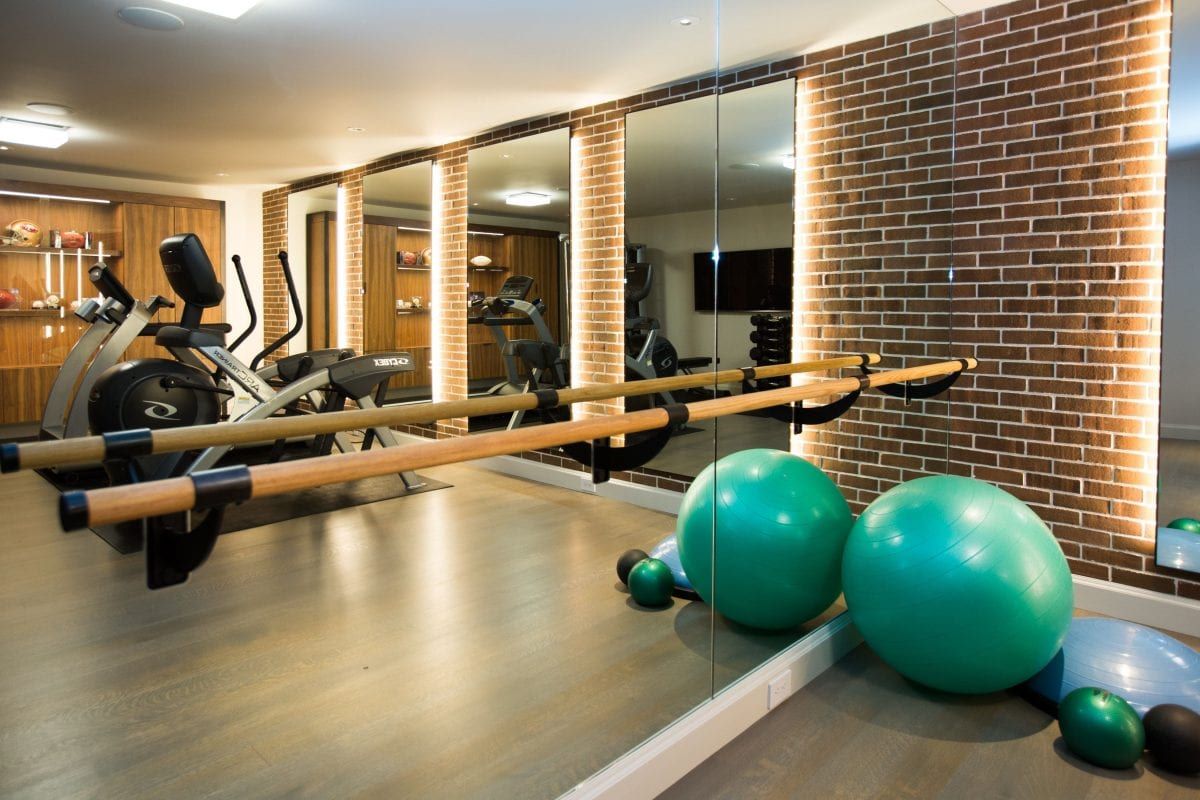
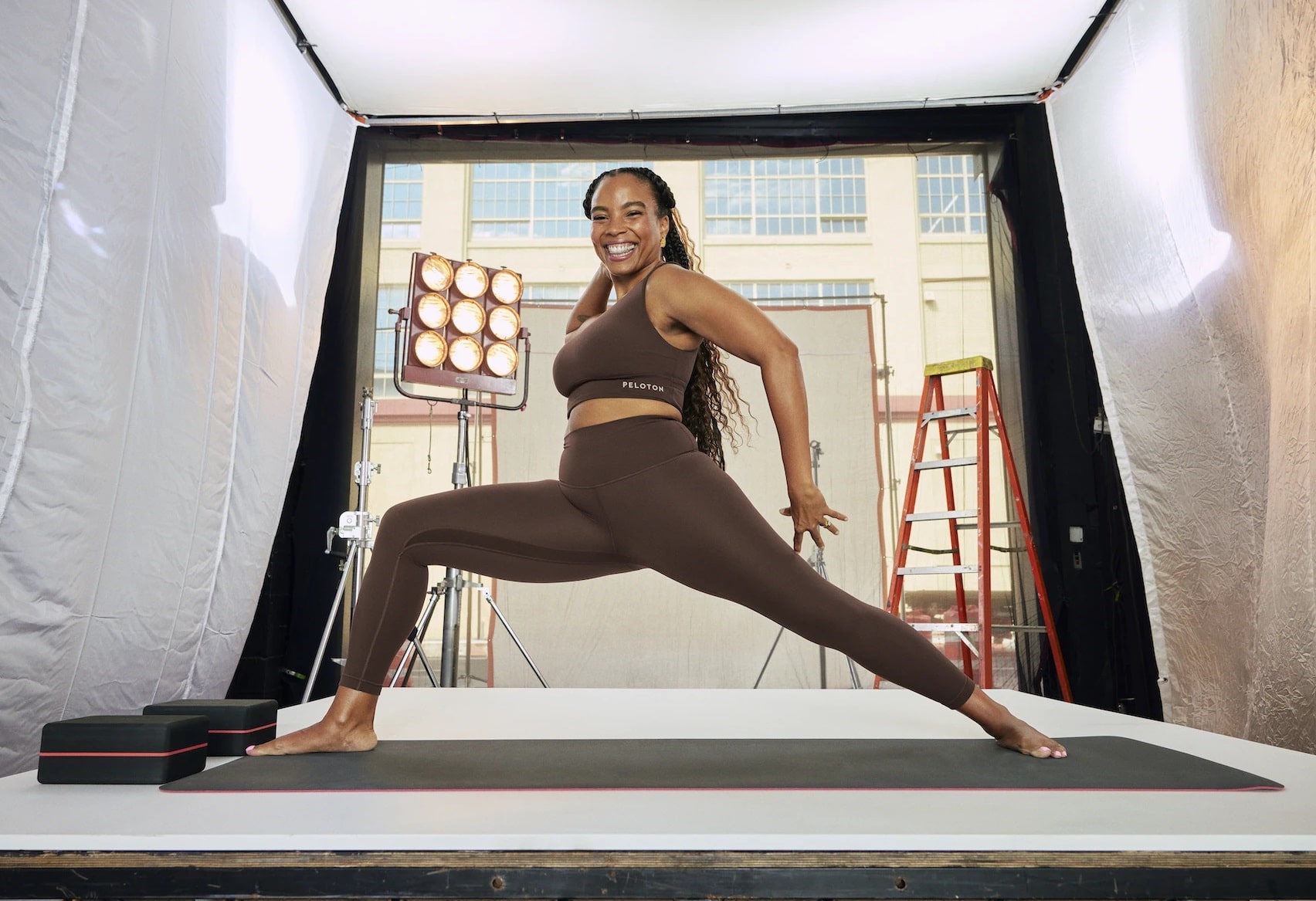
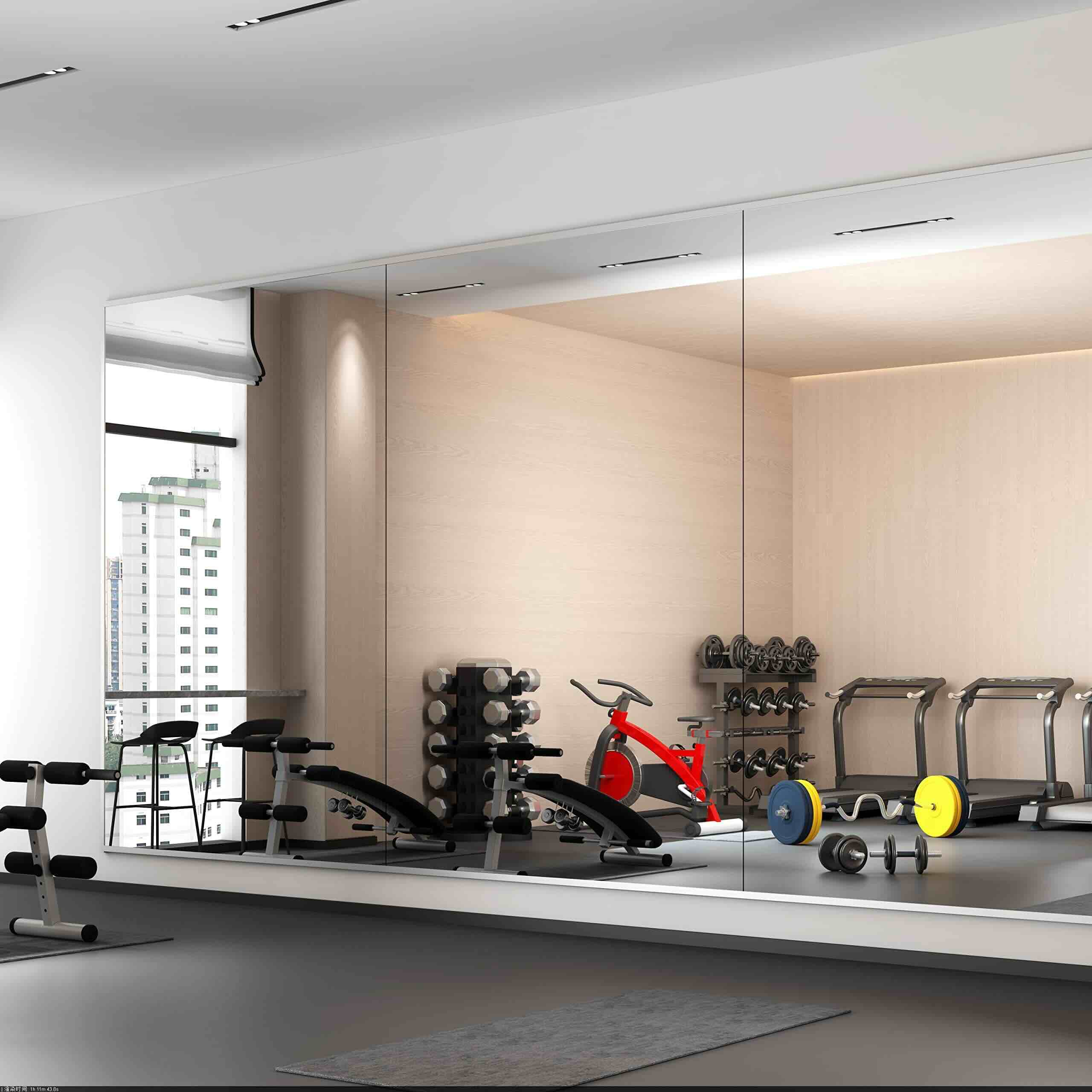
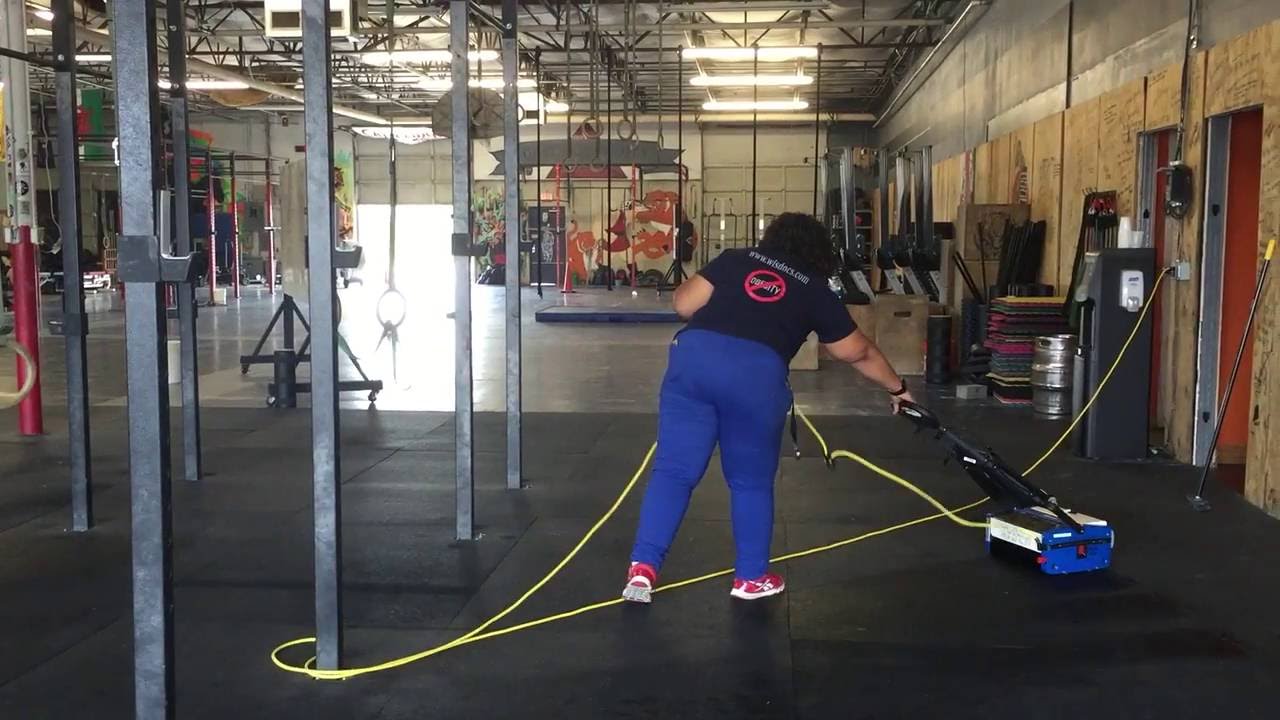
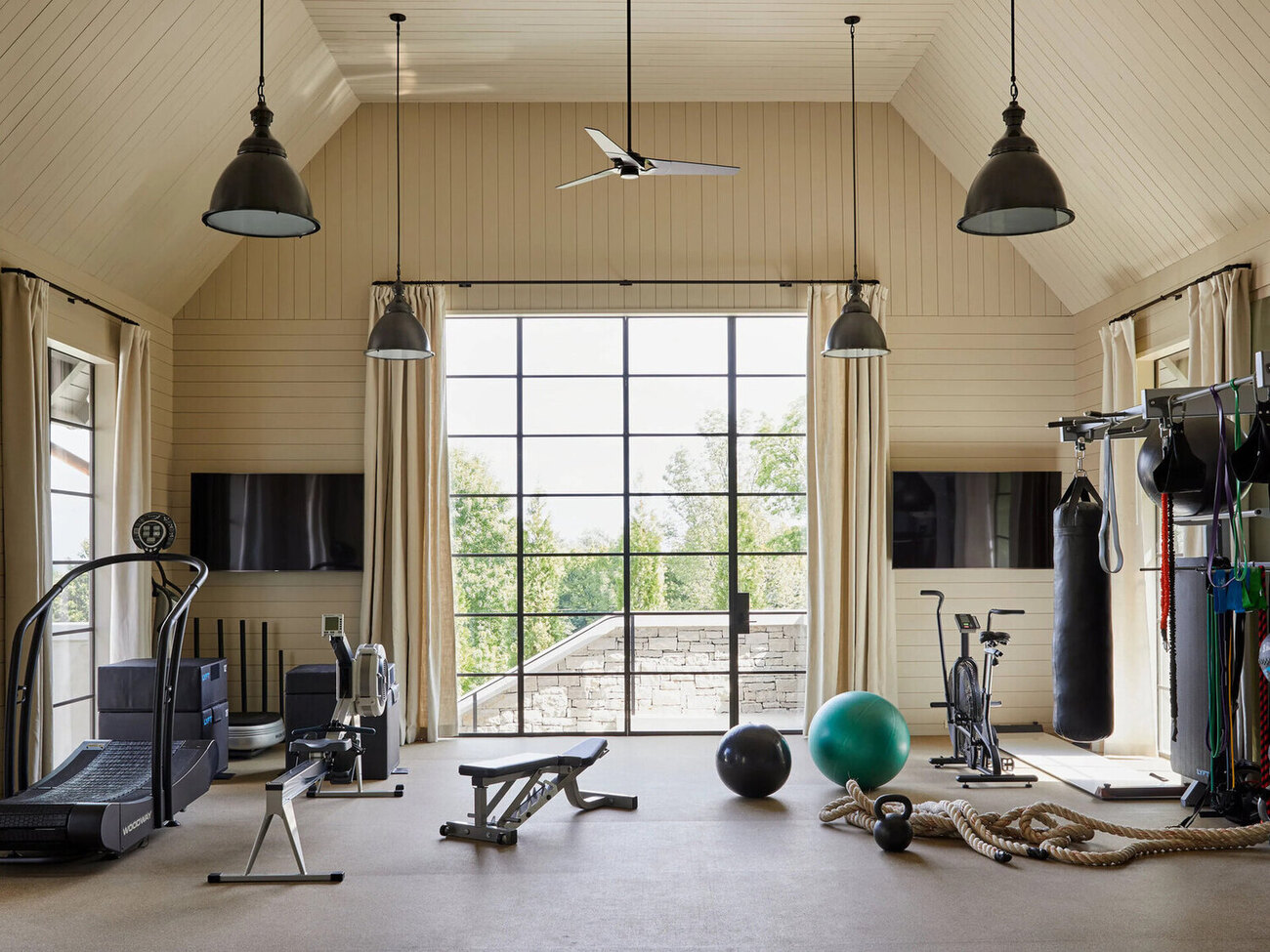
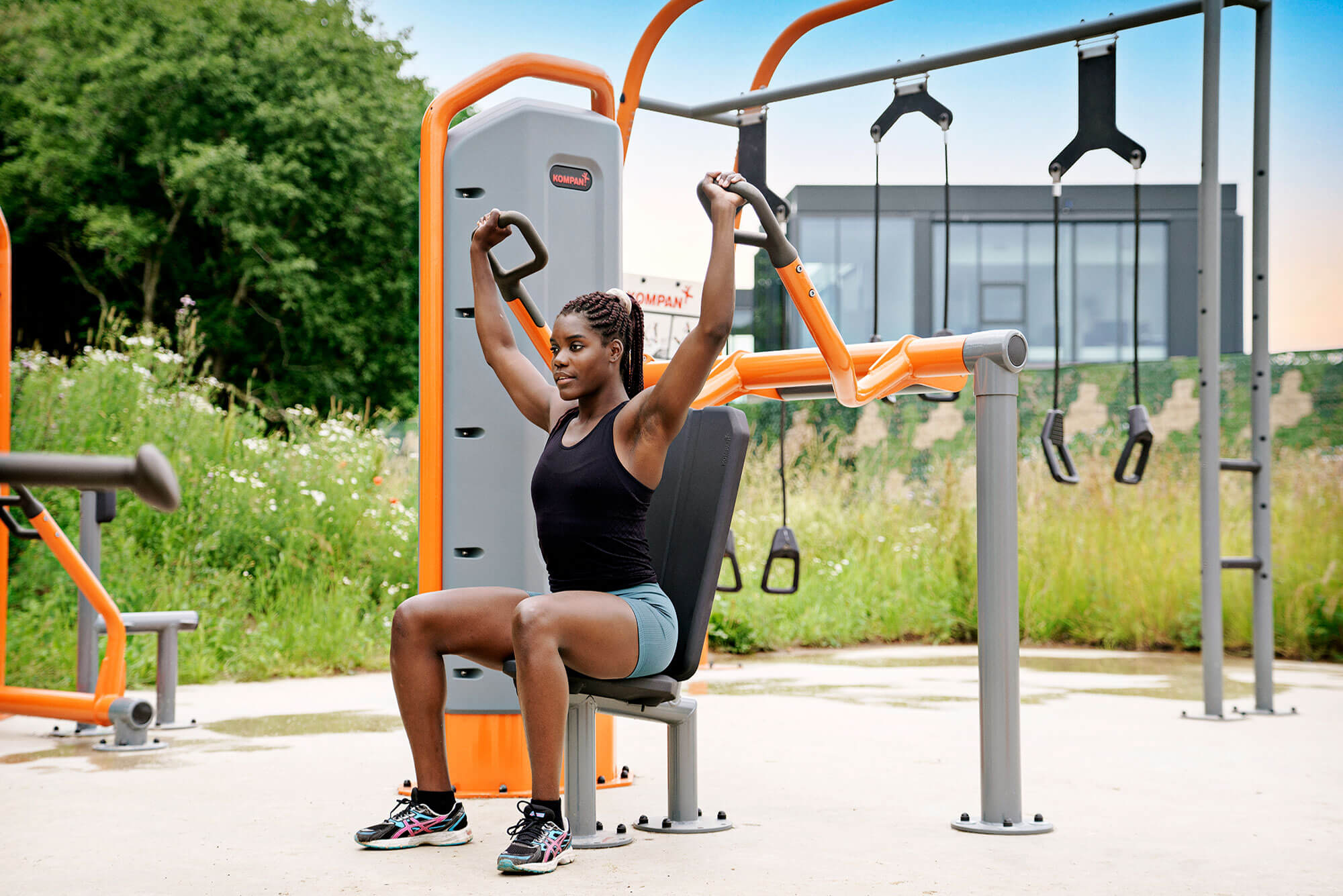
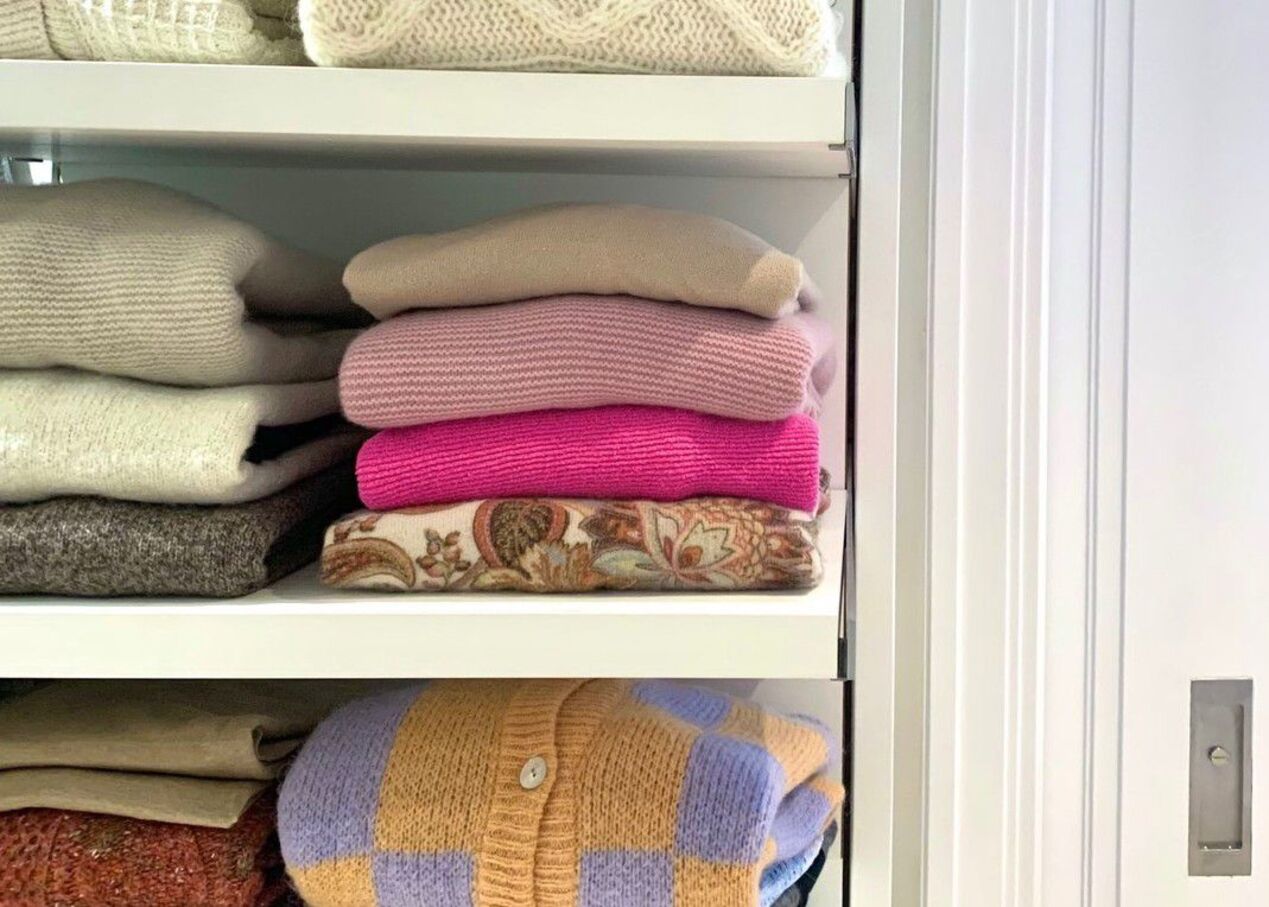
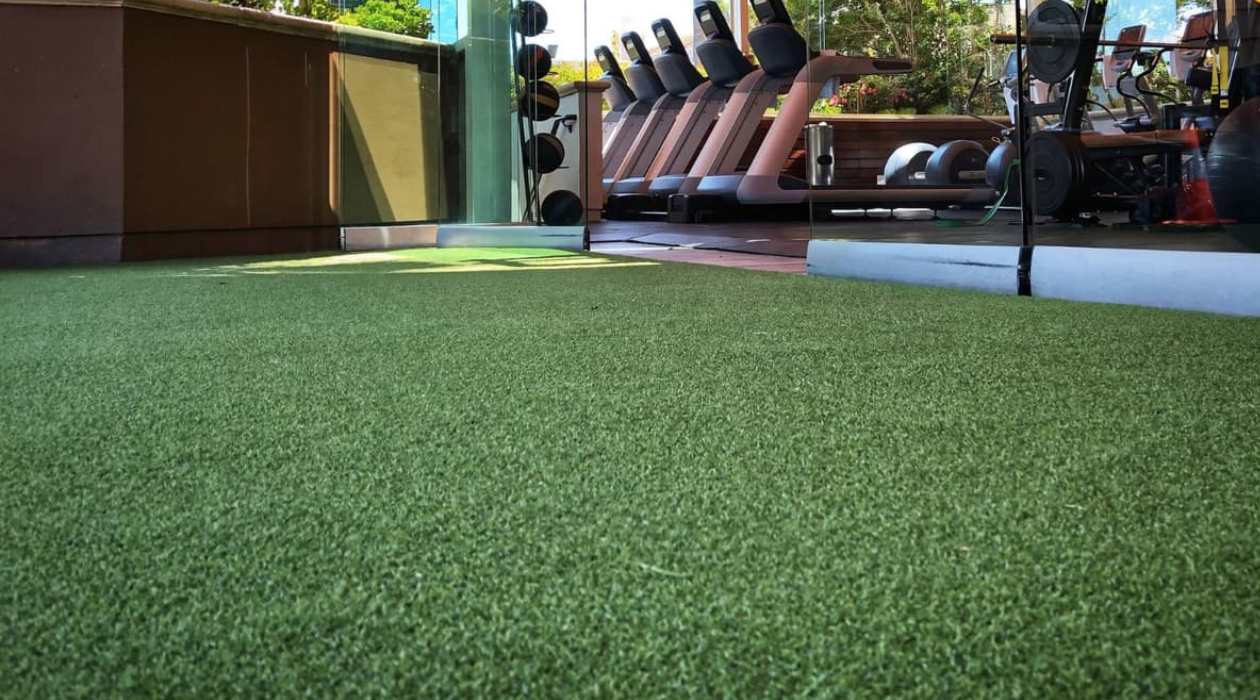
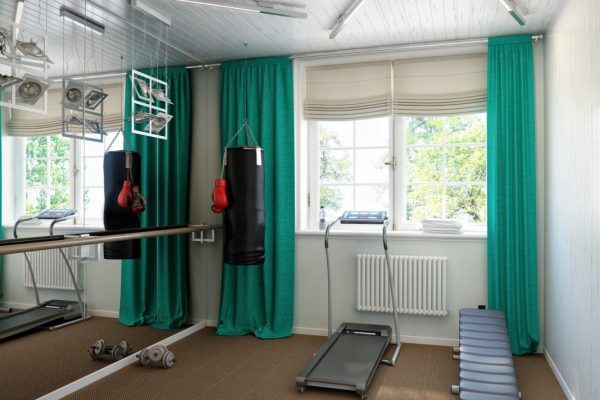
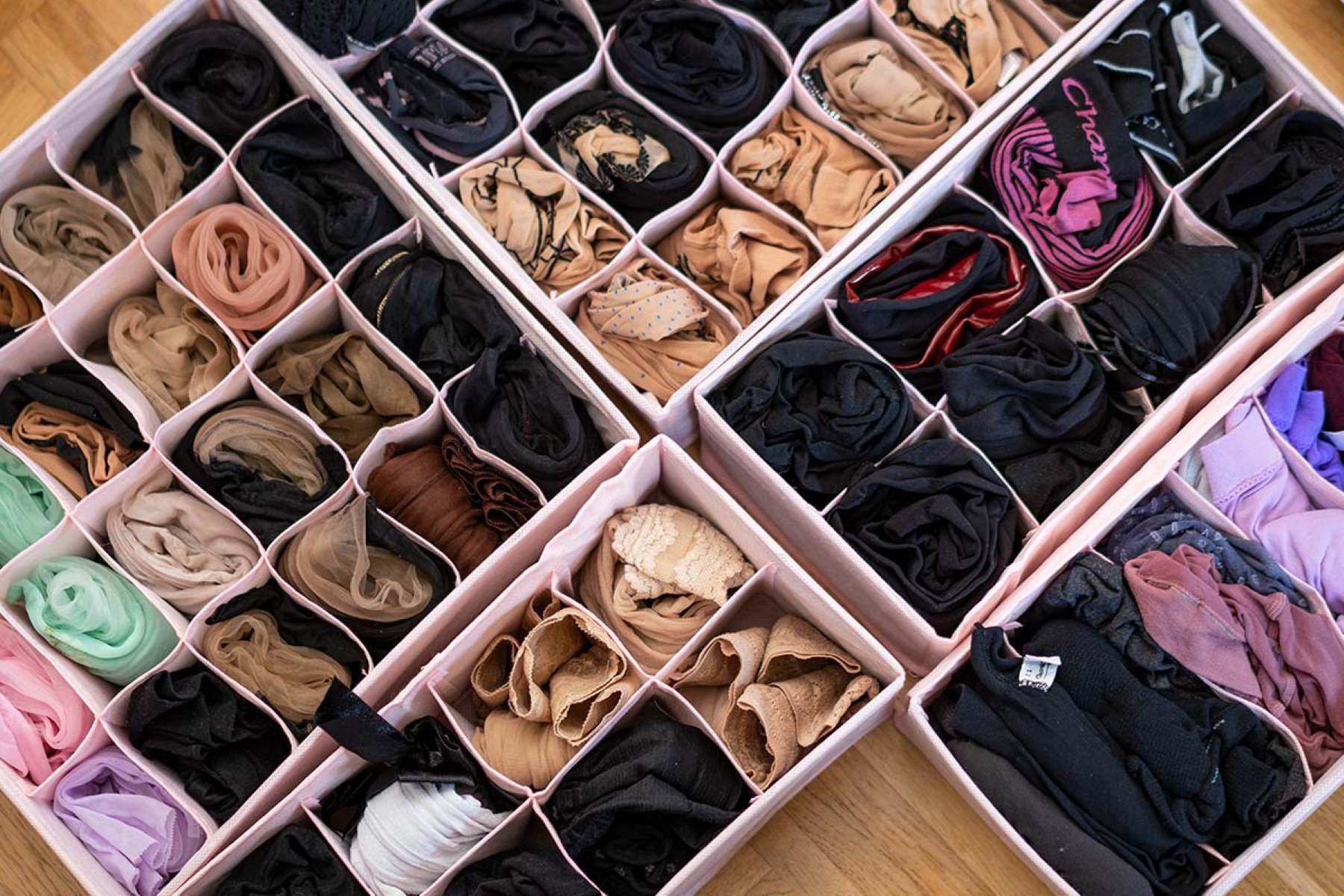
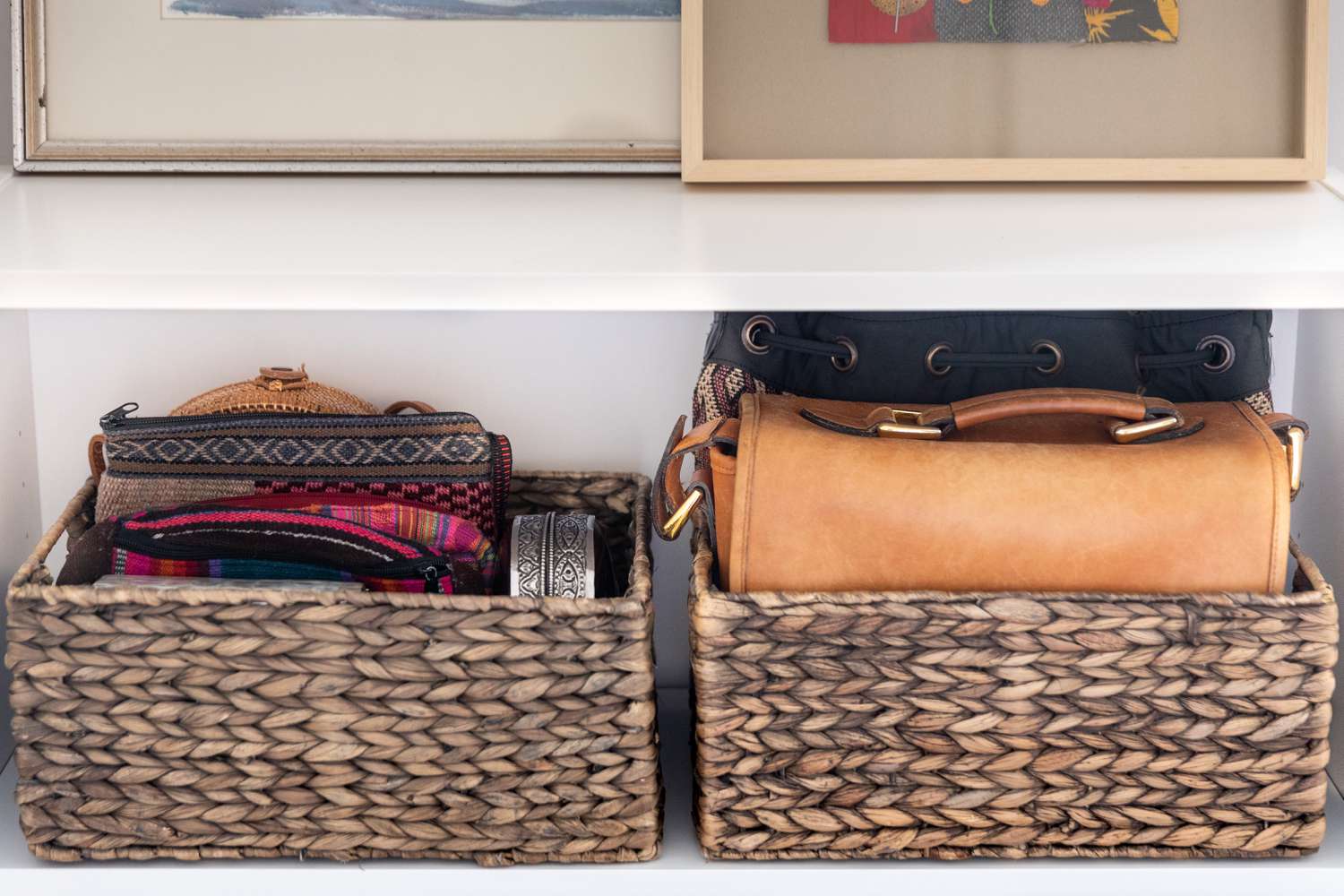
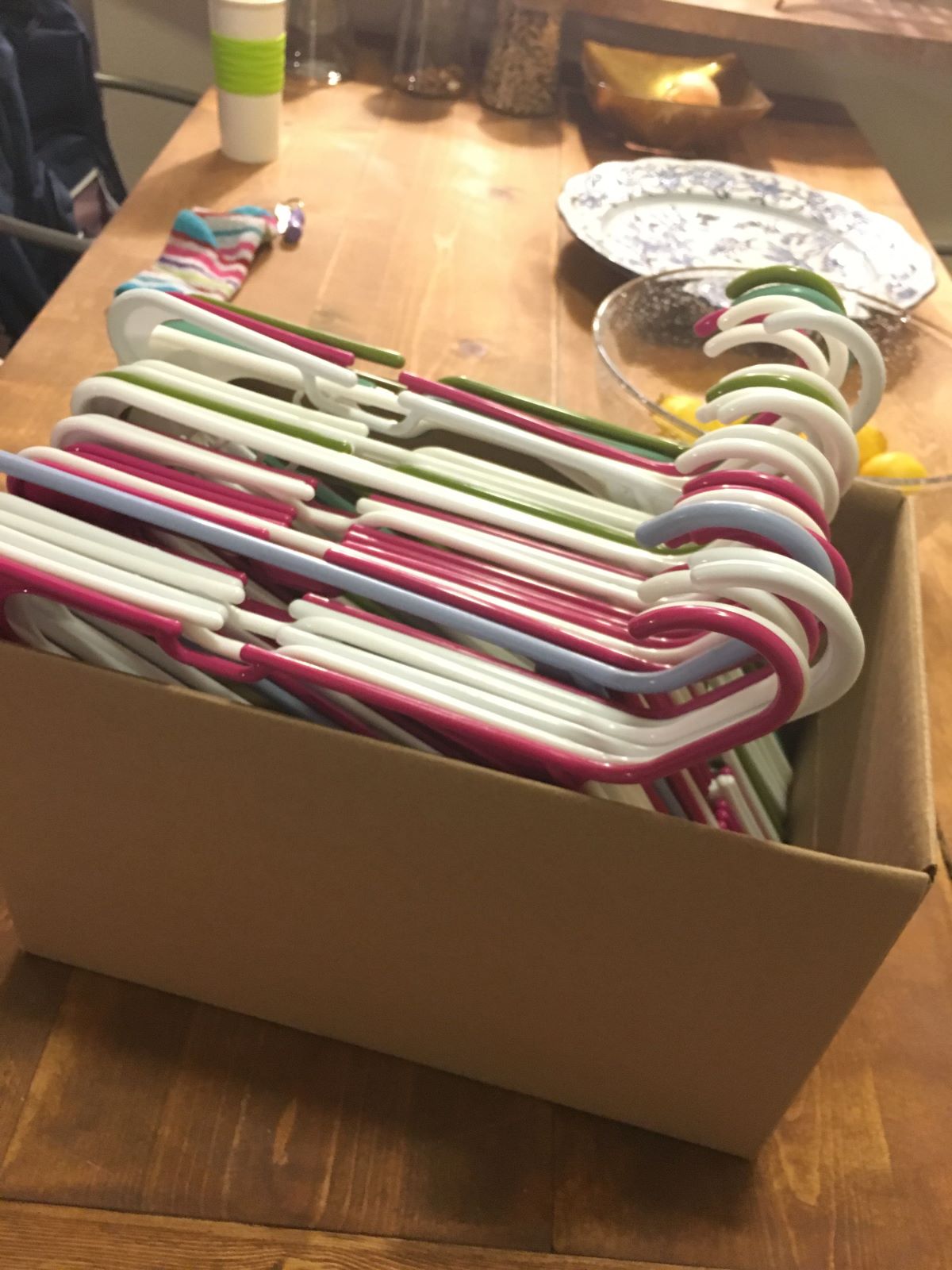
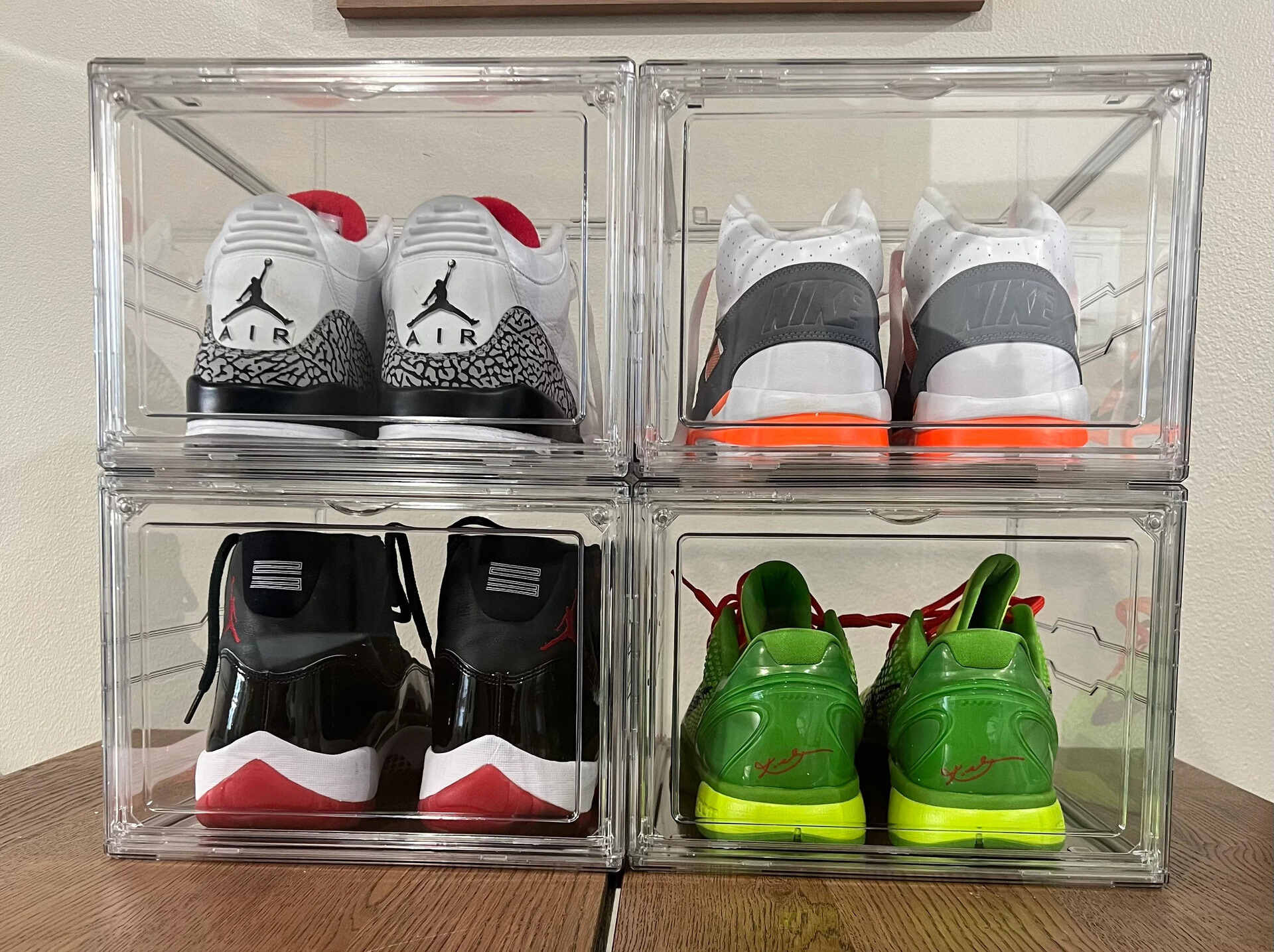

0 thoughts on “How To Store Gym Clothes”